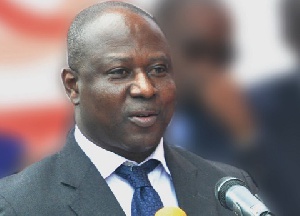Ghana’s total public debt stock, which stood at GH¢110 billion at the end of August, increased to GH¢112.4 billion at the end of September 2016, representing 67.4 percent of Gross Domestic Product (GDP).
Per the aforementioned figures, the country incurred a debt of over GH¢2 billion from August to September 2016.
Out of the total debt stock, debt incurred internally was GH¢47.4 billion, representing 28.4 percent of GDP, while the external debt stock stood at GH¢65 billion, representing 39 percent of GDP.
The debt stock of the country has increased astronomically since the National Democratic Congress (NDC) assumed office in 2009.
The current NDC administration inherited debt stock of GH¢9 billion in 2009 but increased it to GH¢112 billion as at the end of September.
Fiscal Operations
Dr. Abdul Nashir Issahaku, Governor of the Bank of Ghana (BoG), who was addressing the last Monetary Policy Committee (MPC) press briefing for the year 2016, said provisional data on government fiscal operations in the year to September showed a budget deficit of 5.9 percent of GDP compared to a target of 3.9 percent of GDP.
He said the higher than programmed deficit was mainly due to lower revenues, arising from significant shortfalls in oil revenues while expenditures were broadly on track.
Dr. Issahaku said the deficit was financed mainly from domestic sources.
The fiscal outlook hinges on strengthening revenue mobilisation and sustained efforts at containing expenditures.
External Sector Performance
He said Ghana’s external sector performance remains strong, explaining that provisional data shows significant improvement in the external trade deficit in the year to September relative to 2015.
“This improvement was on account of higher export receipts, mainly from gold, combined with lower imports,” Dr. Issahaku said.
He said the outturn of the trade balance has significantly improved the provisional current account deficit to 3.1 percent, relative to target 5.0 percent of GDP, stating “This, together with foreign inflows from the Euro bond, the pre-export finance facility for cocoa and other expected inflows from development partners, will support efforts at building up external reserves. These developments have supported stability in the foreign exchange market.”
Cedi Performance
Dr. Issahaku said the Ghana cedi cumulatively depreciated by 4.3 percent against the US dollar between January and October 2016 compared to cumulative depreciation of 15.5 percent in the same period last year.
The outlook for the exchange rate remains positive, the Committee said.
General News of Tuesday, 22 November 2016
Source: Daily Guide

















